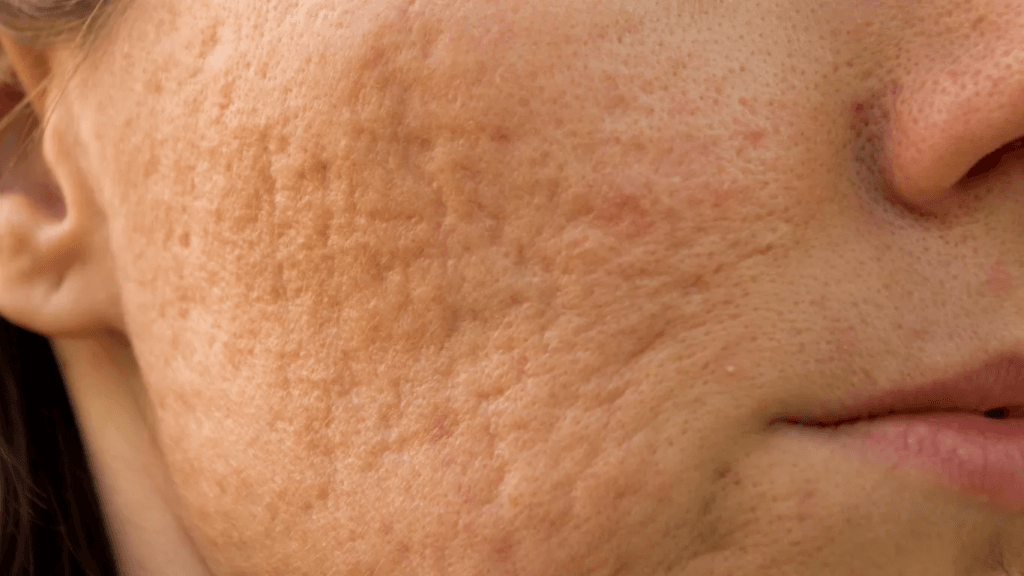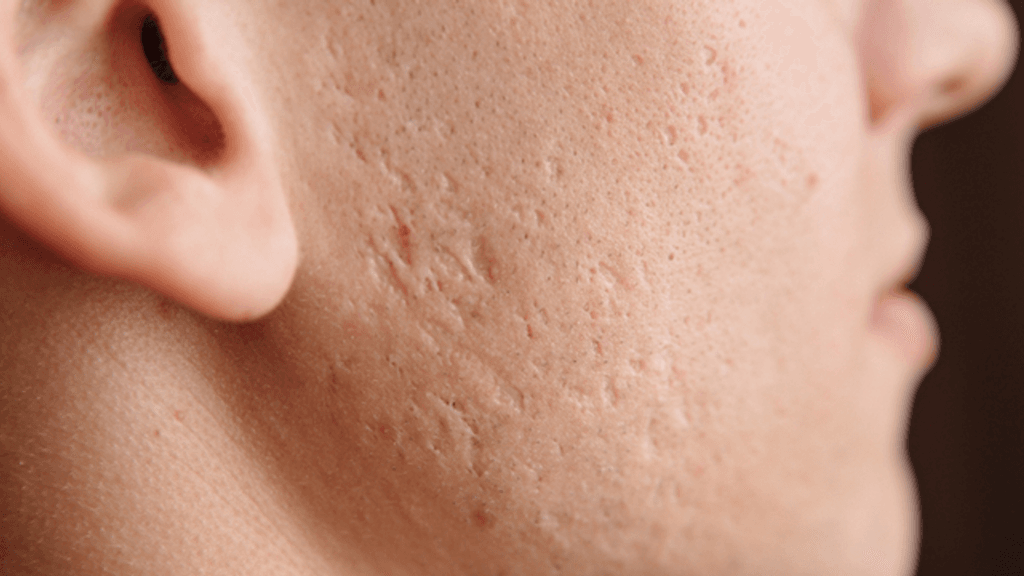Acne, a common skin condition affecting millions, often leaves behind unsightly blemishes, sometimes in the form of holes or pitted scars. While most acne clears up without lasting damage, severe or improperly treated breakouts can lead to permanent textural changes. This article will explore the reasons why pimples sometimes leave holes, the different types of scarring that can occur, and strategies to minimize the risk of scarring.
Understanding Acne Scars
Acne scars result from the body’s healing process after an inflammatory acne lesion. The severity of the scar depends on the depth and extent of the inflammation. When a pimple is severe, the inflammation can damage the underlying dermis, the deeper layer of skin responsible for its structure and elasticity. This damage disrupts the normal collagen and elastin production, leading to the formation of a scar. The body attempts to repair the damaged tissue, but this repair process isn’t always perfect, resulting in visible imperfections.
The depth of the acne lesion is a crucial factor. Superficial pimples may heal without scarring, but deeper lesions, particularly nodular or cystic acne, are more likely to cause permanent damage. These deeper lesions cause more extensive inflammation and tissue destruction, making it harder for the skin to repair itself completely. The size and duration of the acne lesion also contribute to the likelihood of scarring. Larger and longer-lasting lesions increase the risk of significant damage.
Genetic predisposition plays a significant role in how your skin heals from acne. Some individuals are naturally more prone to scarring than others, regardless of the severity of their acne. This is due to individual variations in collagen production and the body’s overall healing response. Understanding your family history of acne scarring can help you anticipate potential risks and take preventive measures.
Furthermore, picking or squeezing pimples significantly increases the risk of scarring. This practice introduces bacteria, further inflames the lesion, and can cause deeper damage to the surrounding skin tissue. It’s crucial to resist the urge to manipulate active acne lesions to minimize the likelihood of permanent scarring.
The Role of Inflammation
Inflammation is the primary driver behind acne scarring. When a pimple forms, it’s a sign of inflammation within the skin. This inflammation involves the release of inflammatory mediators that damage the surrounding tissue. The severity of the inflammation directly correlates with the potential for scarring. Mild inflammation may resolve without leaving a mark, but severe inflammation can lead to significant tissue damage and subsequent scarring.
The inflammatory process involves the recruitment of immune cells to the site of the lesion. These cells release enzymes that break down the surrounding collagen and elastin fibers, crucial components of the skin’s structural integrity. This breakdown contributes to the formation of a depressed scar, or a “hole,” as the skin cannot fully repair itself. The extent of collagen and elastin damage determines the depth and severity of the resulting scar.
The duration of inflammation also plays a critical role. Prolonged inflammation, such as that seen in persistent or recurrent acne lesions, increases the risk of significant tissue damage and subsequent scarring. Prompt and effective treatment of acne is therefore crucial in minimizing inflammation and reducing the likelihood of scarring. This often involves a combination of topical and/or systemic therapies.
Furthermore, the type of acne lesion influences the degree of inflammation. Cystic acne, characterized by deep, painful, pus-filled lesions, is particularly prone to causing scarring due to the intense inflammation associated with these lesions. Nodular acne, characterized by solid, inflamed bumps, also carries a high risk of scarring.

Types of Acne-Related Holes
Ice pick scars are deep, narrow, pitted scars resembling small holes in the skin. They are the most difficult type of acne scar to treat, often requiring aggressive therapies. These scars result from significant damage to the dermis, leaving behind a narrow, deep depression.
Boxcar scars are wider and more shallow than ice pick scars, appearing as broad, square or rectangular depressions in the skin. They are caused by significant loss of dermal tissue, leaving behind a noticeable indentation. While less severe than ice pick scars, they are still aesthetically challenging to treat.
Rolling scars are characterized by uneven, undulating skin texture. They are caused by a combination of dermal damage and tethering of the skin to underlying tissues. This creates a rolling appearance, with varying depths of depression across the affected area. These scars are often difficult to treat and may require a multi-faceted approach.
Understanding the specific type of acne scar is essential for choosing the most appropriate treatment strategy. A dermatologist can accurately diagnose the type of scar and recommend the most effective treatment options, which may include topical treatments, chemical peels, laser therapy, microneedling, or fillers.
Preventing Scarring and Holes
Early and aggressive treatment of acne is the most effective way to prevent scarring. The sooner acne is addressed, the less chance there is of significant inflammation and subsequent damage to the skin. This often involves a combination of topical treatments like retinoids, benzoyl peroxide, and antibiotics, as well as oral medications in more severe cases.
Maintaining good skin hygiene is crucial. Gently cleansing the skin twice daily with a non-comedogenic cleanser helps to remove excess oil and prevent clogged pores, reducing the likelihood of acne breakouts. Avoid harsh scrubbing or excessive exfoliation, which can irritate the skin and worsen inflammation.
Resist the urge to pick or squeeze pimples. This practice can introduce bacteria, worsen inflammation, and significantly increase the risk of scarring. Hands should be kept away from the face as much as possible. If you’re struggling with the temptation to pick, consider seeking professional help to manage this behavior.
Finally, consistent sunscreen use is essential. Sun exposure can worsen acne scarring by increasing inflammation and hyperpigmentation. Using a broad-spectrum sunscreen with an SPF of 30 or higher daily helps to protect the skin from sun damage and promotes healthy healing.
While acne scarring can be a frustrating and disheartening experience, understanding the underlying causes and taking preventative measures can significantly reduce the risk. Early intervention, proper treatment of acne, and avoiding harmful practices like picking or squeezing pimples are crucial steps in minimizing the likelihood of developing acne-related holes or scars. If you are concerned about acne scarring, consult a dermatologist for a personalized evaluation and treatment plan.
Discover the expertise of Dr. Ebru Okyay, your trusted dermatologist in Antalya. Whether you’re looking to address medical skin concerns or enhance your natural beauty with cosmetic treatments, Dr. Okyay is here to help. With personalized care and advanced techniques, achieving your skin goals has never been easier.
